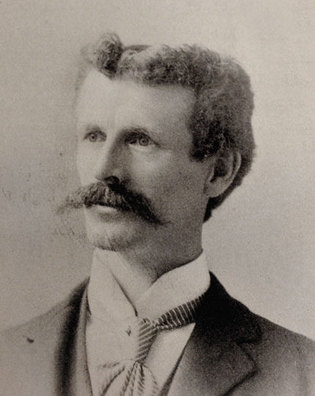 loading
loading
Old YaleBuilding a better student bodyThe doctor who pioneered physical education at Yale. Judith Ann Schiff is chief research archivist at the Yale University Library.  Manuscripts and ArchivesWilliam G. Anderson ’02, ’03MA, ’09MS, held the rank of full professor and director of the Yale Gymnasium. View full imageYale’s golden age of physical fitness began in 1892, when a grand neo-Roman style gymnasium replaced the 1859 building on Library Street that Yale men had judged to be the poorest gym in the East. At the same time, the university appointed William G. Anderson, “an experienced and able teacher from Brooklyn,” as the associate director of the gymnasium. He turned out to be an innovator and a dynamo. Anderson, the son of a clergyman, had grown up in the Midwest and become an expert gymnast. (He said he had been trained by circus acrobats.) He attended the University of Wisconsin for two years, then earned his MD in Cleveland in 1883 at what is now Case Western. Soon after becoming director of the gymnasium at Adelphi Academy in Brooklyn, New York, he organized the American Physical Education Association. The next year he founded his own school, the Brooklyn Normal School for Physical Education. When he moved to New Haven he brought his school with him, though he gave it up later to concentrate on Yale. Anderson and his co-associate director at the Yale Gymnasium—Jay Webber Seaver ’80, ’85MD, ’93MA—directed a program that, the course catalogue explained, was “designed to provide all students of the University with opportunities not only for general exercises, but also for means of caring for the body with a knowledge of hygienic laws, as well as for specific training in view of any physical defects that may be remedied by rational superintendence.” The records showed, the catalogue said, that “the standard of health of the average student improves during his college course.” At the same time, Anderson, feeling his lack of a liberal education, enrolled in Yale in 1896, eventually graduating with the Class of 1902. The 25-year class history records that he “attended all recitations, took all examinations, and sat next to Freshies, Sophs, Juniors, Seniors, and PG’s”—and was known by the nickname “Doc.” After taking his BA, he went on to earn an MA in 1903 and an MS in 1909, and in 1912 “was one of the first seven to be awarded the degree of Doctor of Public Health from Harvard.” In the meantime, in 1903, Anderson became the director of the Yale Gymnasium with the rank of full professor. As the New York Herald Tribune described him, Anderson was “in no sense a gymnasium drill master.” He believed that there was a sport or athletic activity to be enjoyed by all. Influenced by the writings of Catherine E. Beecher—founder of the Western Female Institute in Ohio, who created a program in which young women exercised to music—he introduced dance into the Yale program in 1903. He preferred folk dances, especially “the Irish Leaping Dance to make them graceful,” as the Tribune put it. (To prepare for teaching dance, Anderson “took up ballet work with Bibbran, the New York dancing master, soubrette and step work with Eddie Collier, and clog dances with Bogan on the Bowery.”) Anderson, who wrote a number of books on physical education, also conducted statistical studies to prove that athletes live longer. He invented several devices for testing strength and development, including the ergometer. His influence was felt around the country through the physical education summer schools he directed in New York, Utah, and California. Moreover, according to the Tribune, through him Yale became “the organizational father of such minor sports as fencing, soccer, boxing, wrestling, swimming, and tennis.” Anderson continued as director of Yale’s gym until the opening of Payne Whitney Gymnasium in 1932, when he retired. (He was replaced by Bob Kiphuth, the celebrated Yale swimming coach, whom he had hired as an assistant in 1914.) When he died in 1947, at 86, the New York Herald Tribune headline read in part: “Pioneered Training in US; Exponent of Sports for All Students.”
The comment period has expired.
|
|